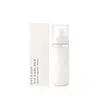What's inside
What's inside
 Key Ingredients
Key Ingredients

 Benefits
Benefits

 Concerns
Concerns

 Ingredients Side-by-side
Ingredients Side-by-side

Water
Skin ConditioningPropylene Glycol
HumectantButylene Glycol
HumectantHamamelis Virginiana Water
AstringentPolyurethane-35
Vp/Va Copolymer
Glycereth-26
HumectantPropanediol
Solvent1,2-Hexanediol
Skin ConditioningNiacinamide
SmoothingGlycyrrhiza Uralensis Root Extract
Skin ConditioningPortulaca Oleracea Flower/Leaf/Stem Extract
AntioxidantPaeonia Suffruticosa Root Extract
Skin ProtectingPaeonia Lactiflora Extract
AstringentAloe Barbadensis Leaf Water
MaskingPanthenol
Skin ConditioningHydrolyzed Vegetable Protein
Skin ConditioningCaprylhydroxamic Acid
Disodium EDTA
Bisabolol
MaskingSuccinic Acid
BufferingResveratrol
AntioxidantPhenoxyethanol
PreservativeZinc PCA
HumectantCaprylyl Glycol
EmollientMethylparaben
PreservativeBiosaccharide Gum-1
HumectantSodium Benzoate
MaskingPotassium Sorbate
PreservativeEthylhexylglycerin
Skin ConditioningWater, Propylene Glycol, Butylene Glycol, Hamamelis Virginiana Water, Polyurethane-35, Vp/Va Copolymer, Glycereth-26, Propanediol, 1,2-Hexanediol, Niacinamide, Glycyrrhiza Uralensis Root Extract, Portulaca Oleracea Flower/Leaf/Stem Extract, Paeonia Suffruticosa Root Extract, Paeonia Lactiflora Extract, Aloe Barbadensis Leaf Water, Panthenol, Hydrolyzed Vegetable Protein, Caprylhydroxamic Acid, Disodium EDTA, Bisabolol, Succinic Acid, Resveratrol, Phenoxyethanol, Zinc PCA, Caprylyl Glycol, Methylparaben, Biosaccharide Gum-1, Sodium Benzoate, Potassium Sorbate, Ethylhexylglycerin
Water
Skin ConditioningVinyl Dimethicone/Methicone Silsesquioxane Crosspolymer
Rosa Damascena Flower Water
MaskingButylene Glycol
HumectantHyaluronic Acid
HumectantFerulic Acid
AntimicrobialSodium Hyaluronate
HumectantPanthenol
Skin ConditioningPhenoxyethanol
PreservativeEctoin
Skin ConditioningHydroxyacetophenone
AntioxidantPEG-11 Methyl Ether Dimethicone
EmulsifyingLactobacillus Ferment
Skin ConditioningLactobacillus/Ganoderma Lucidum Extract/Lentinus Edodes Extract Ferment Filtrate
Skin ConditioningSaccharomyces Ferment
Skin ConditioningDisodium EDTA
Hectorite
AbsorbentBis-Ethoxydiglycol Cyclohexane 1,4-Dicarboxylate
EmollientLinalool
PerfumingHexyl Cinnamal
PerfumingCitric Acid
BufferingMethyl Diisopropyl Propionamide
MaskingAroma
Caprylhydroxamic Acid
1,2-Hexanediol
Skin ConditioningWater, Vinyl Dimethicone/Methicone Silsesquioxane Crosspolymer, Rosa Damascena Flower Water, Butylene Glycol, Hyaluronic Acid, Ferulic Acid, Sodium Hyaluronate, Panthenol, Phenoxyethanol, Ectoin, Hydroxyacetophenone, PEG-11 Methyl Ether Dimethicone, Lactobacillus Ferment, Lactobacillus/Ganoderma Lucidum Extract/Lentinus Edodes Extract Ferment Filtrate, Saccharomyces Ferment, Disodium EDTA, Hectorite, Bis-Ethoxydiglycol Cyclohexane 1,4-Dicarboxylate, Linalool, Hexyl Cinnamal, Citric Acid, Methyl Diisopropyl Propionamide, Aroma, Caprylhydroxamic Acid, 1,2-Hexanediol
 Reviews
Reviews

Ingredients Explained
These ingredients are found in both products.
Ingredients higher up in an ingredient list are typically present in a larger amount.
1,2-Hexanediol is a synthetic liquid and another multi-functional powerhouse.
It is a:
- Humectant, drawing moisture into the skin
- Emollient, helping to soften skin
- Solvent, dispersing and stabilizing formulas
- Preservative booster, enhancing the antimicrobial activity of other preservatives
Butylene Glycol (or BG) is used within cosmetic products for a few different reasons:
Overall, Butylene Glycol is a safe and well-rounded ingredient that works well with other ingredients.
Though this ingredient works well with most skin types, some people with sensitive skin may experience a reaction such as allergic rashes, closed comedones, or itchiness.
Learn more about Butylene GlycolCaprylhydroxamic Acid is a chelating agent.
Chelating agents help prevent metal ions from binding to other ingredients. This helps prevent unwanted reactions and effects from using the product.
Caprylhydroxamic Acid is often used with natural antimicrobial products as an alternative to preservatives.
Learn more about Caprylhydroxamic AcidDisodium EDTA plays a role in making products more stable by aiding other preservatives.
It is a chelating agent, meaning it neutralizes metal ions that may be found in a product.
Disodium EDTA is a salt of edetic acid and is found to be safe in cosmetic ingredients.
Learn more about Disodium EDTAPanthenol is a common ingredient that helps hydrate and soothe the skin. It is found naturally in our skin and hair.
There are two forms of panthenol: D and L.
D-panthenol is also known as dexpanthenol. Most cosmetics use dexpanthenol or a mixture of D and L-panthenol.
Panthenol is famous due to its ability to go deeper into the skin's layers. Using this ingredient has numerous pros (and no cons):
Like hyaluronic acid, panthenol is a humectant. Humectants are able to bind and hold large amounts of water to keep skin hydrated.
This ingredient works well for wound healing. It works by increasing tissue in the wound and helps close open wounds.
Once oxidized, panthenol converts to pantothenic acid. Panthothenic acid is found in all living cells.
This ingredient is also referred to as pro-vitamin B5.
Learn more about PanthenolPhenoxyethanol is a preservative that has germicide, antimicrobial, and aromatic properties. Studies show that phenoxyethanol can prevent microbial growth. By itself, it has a scent that is similar to that of a rose.
It's often used in formulations along with Caprylyl Glycol to preserve the shelf life of products.
Water. It's the most common cosmetic ingredient of all. You'll usually see it at the top of ingredient lists, meaning that it makes up the largest part of the product.
So why is it so popular? Water most often acts as a solvent - this means that it helps dissolve other ingredients into the formulation.
You'll also recognize water as that liquid we all need to stay alive. If you see this, drink a glass of water. Stay hydrated!
Learn more about Water